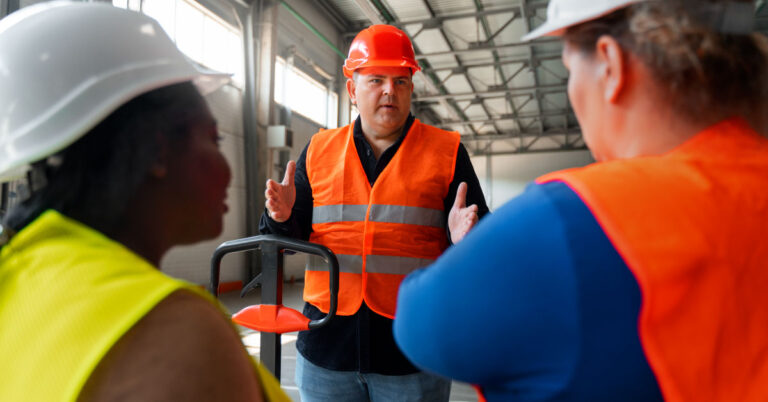CITB Site Supervision Safety Training Scheme Refresher
We exclusively deliver training sessions in the highest quality facilities. Explore our venues and discover our available dates and pricing below but make sure that your previous SSSTS course certificate is within 5 years old. CITB to allow for the end of the month of your expiry date:
In the event of a cancellation or deferment, we provide fully transparent terms and conditions.

Our CITB Site Supervision Safety Training Scheme Refresher, or SSSTS Refresher course in Stoke-on-Trent, Staffordshire is for delegates who have previously passed the two-day Site supervision safety training scheme (SSSTS) within the last 5 years.
It aims to bring health and safety knowledge up to date, as well as giving a thorough overview of the legislative changes and their impact in the workplace.
The SSSTS Refresher course in Stoke, Staffordshire includes a wide range of topics which have been affected by changes to procedures and builds upon the material in the original course.
1. Health and safety law
Purpose of health and safety legislation and the different legislative requirements that must be followed to ensure this is achieved.
2. Construction (Design and Management) Regulations 2015 (CDM)
How the CDM Regulations are used to support health and safety on site.
3. Health and safety management systems
Develop, maintain and monitor a health and safety management system.
4. Risk assessments and method statements
Write and use risk assessments and method statements to ensure a safe working environment.
5. Statutory inspections and checks
Statutory inspections and checks for a construction site.
6. Reporting accidents, injuries and ill health
Reporting accidents, injuries and ill health that may occur in the construction industry.
7. Leadership and worker engagement
Good leadership and worker engagement to aid with protecting the workforce.
1. Health and welfare of the workforce
Protect the health and welfare of the workforce in the construction industry.
2. First aid and emergency procedures
Manage first aid and emergency procedures for a construction site.
3. Hazardous substances
Identify and handle hazardous substances associated with working on a construction site.
4. Asbestos
Risks to health posed by asbestos, and the basic legal requirements to manage those risks.
5. Dust and fumes
Control exposure to dust and fumes (respiratory hazards) for workers on a construction site.
6. Noise and vibration
Control exposure to noise and vibration for construction workers.
7. Manual handling
Outline how to properly undertake manual handling activities when lifting loads
1. Site set up and security
Factors to be considered when setting up a construction site.
2. Fire prevention and control
Fire hazard risks and identify basic requirements for fire safety on site.
3. Electricity
Dangers of electricity and good working practices for working on, or near to, live electrical circuits and with electrical tools and equipment.
4. Plant and work equipment
Control and the management of plant, transport and work equipment on site.
5. Lifting operations and lifting equipment
Basic requirements for safe lifting operations, equipment and accessories and the steps required to ensure safety.
1. Working at height
Key principles for working safely at height.
2. Excavations
Main hazards and control considerations for excavation work.
3. Underground and overhead services
Locate, identify and plan for work near underground and overhead services.
4. Confined spaces
Main hazards and safety considerations for working in a confined space.
5. Temporary works
Main duties of temporary works supervisors.
1. Environmental awareness
Environmental awareness on site.
2. Pollution
Preventing pollution.
3. Waste materials
Environmental damage can occur from improper management of waste materials.
4. Nuisance
Reducing nuisance, noise, dust and light.
The method of assessment is a one-step journey:
The examination paper is compulsory and consists of 25 questions, selected by CITB, covering all aspects of the course. The examination pass mark is 80% (24 out of 30). The paper consists of 22 multiple choice questions and three short written questions. There are four safety critical questions in each exam paper. The learner must answer all four of these questions correctly to pass the exam
Join our newsletter community today to receive exclusive updates, expert tips, and special offers straight to your inbox, empowering you to stay informed and inspired on your safety journey.
Talk to humans
+44 0330 1242165
hello@acadame.co.uk